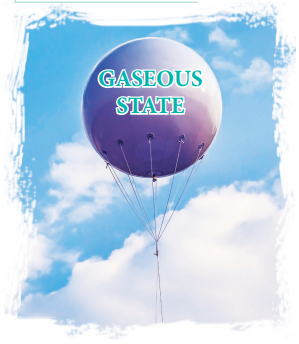Introduction | Chemistry - Gaseous State | 11th Chemistry : UNIT 6 : Gaseous State
Chapter: 11th Chemistry : UNIT 6 : Gaseous State
Gaseous State
GASEOUS STATE
So many of the properties of properties of matter, especially when in gaseous form, can be deduced from hypothesis that their minute parts are in rapid motion, the velocity increasing with temperature, that the precise nature of this motion becomes a subject of rational curiosity.
James
Clerk Maxwell

Introduction
We can survive for weeks without food, days without water,
but only minutes without air. Thus, we inhale a lungful of air every few
seconds, keep some of the molecules for our own end, and some of the molecules
that our body no longer needs, and exhale the mixture back into the surrounding
air. The air around us is in the gaseous state, which is the simplest of the
states of matter. Although the chemical behaviour of gases depends on their
composition, all the gases have remarkably similar physical behaviour.
Do you know the difference between
gas and vapour?
Gas is a substance that is
normally in a gaseous state at room temperature and 1 atm pressure, while
vapour is the gaseous form of any substance that is a liquid or solid at room
temperature and 1 atm pressure.
Earth is surrounded by an atmosphere of air whose
composition in volume percentage is roughly 78 % nitrogen, 21 % oxygen and 1 %
other gases. Of the known elements, only eleven are gases under normal atmospheric
conditions. The elements hydrogen (H2), nitrogen (N2),
oxygen (O2), fluorine (F2) and chlorine (Cl2)
exist as gaseous diatomic molecules. Another form of oxygen, namely, ozone (O3)
is also a gas at room temperature. The noble gases, namely, helium (He), neon
(Ne), argon (Ar), krypton (Kr), xenon (Xe) and radon (Rn) of 18th
group are monatomic gases. Compounds such as carbon monoxide (CO), carbon
dioxide (CO2), nitrogen dioxide (NO2) and nitric oxide
(NO) also exist in gaseous state under normal atmospheric conditions. In this
unit you will learn the properties of gases and other related phenomena.

Related Topics